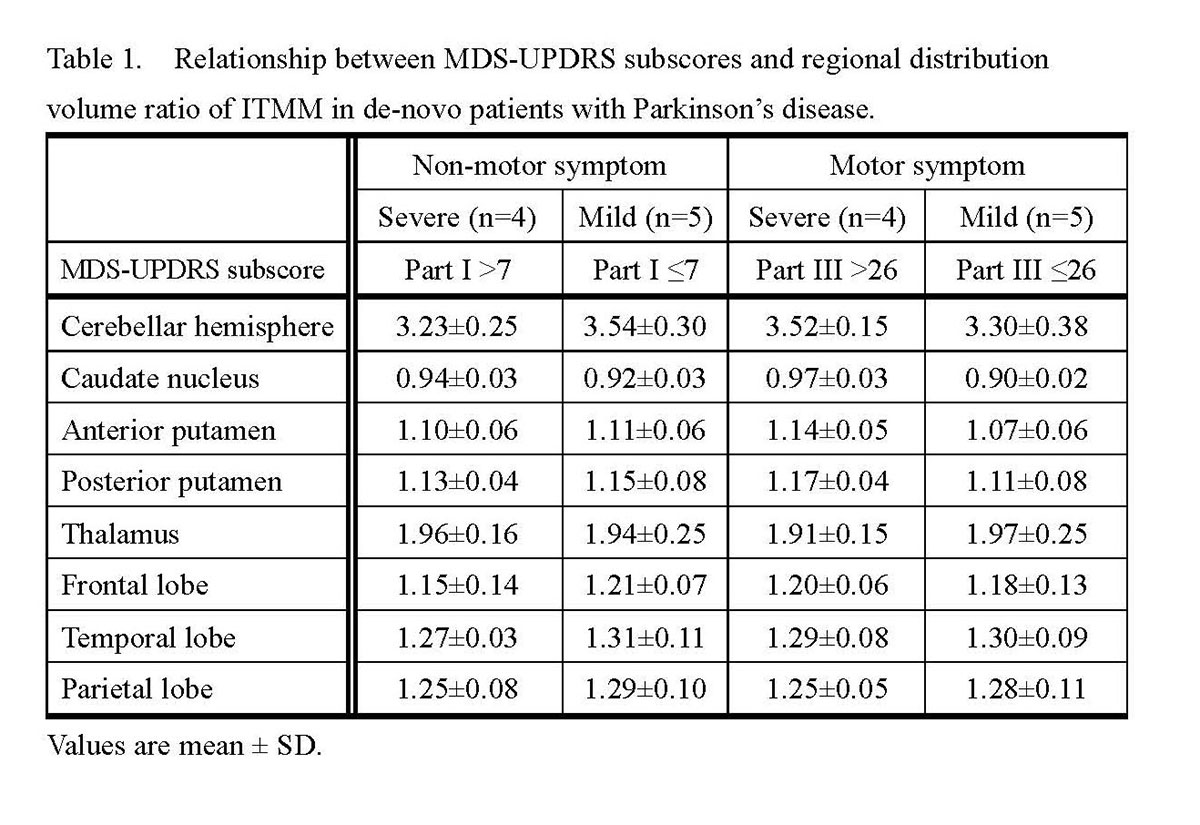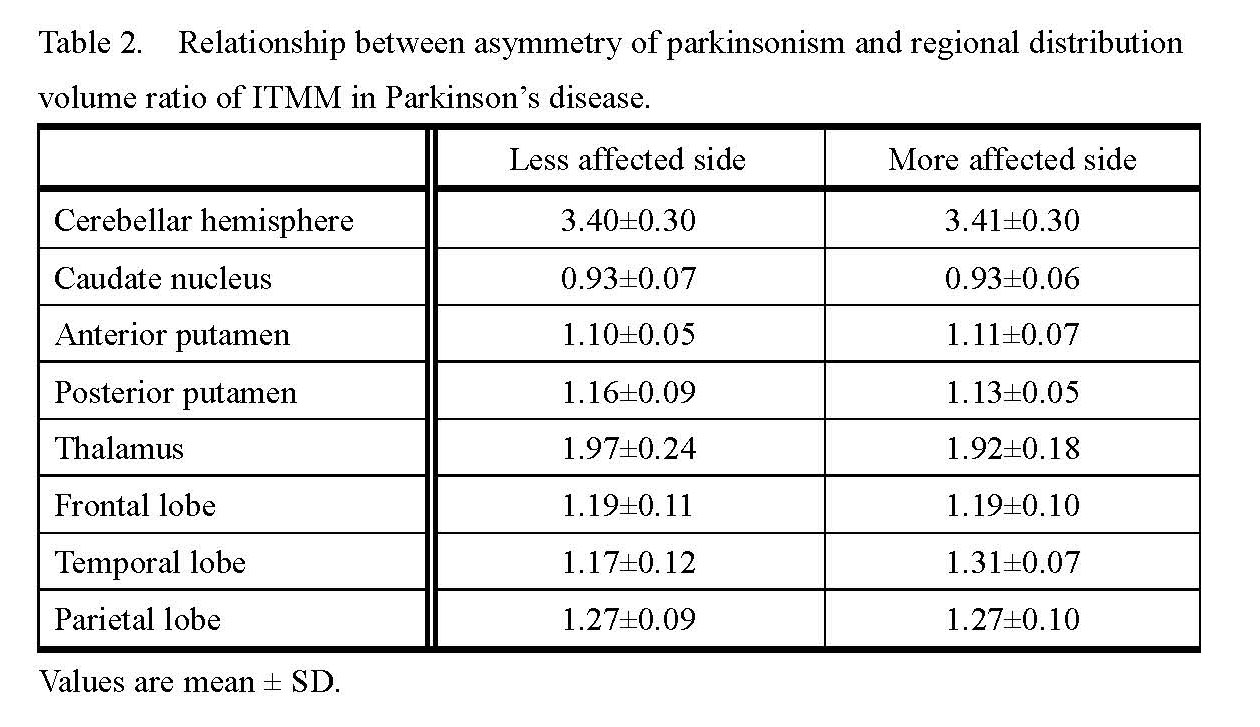Session Information
Date: Wednesday, September 25, 2019
Session Title: Neuroimaging
Session Time: 1:15pm-2:45pm
Location: Les Muses Terrace, Level 3
Objective: To investigate correlations of motor and non-motor symptoms with the brain densitiesof the metabotropic glutamate receptor subtype 1 (mGluR1) in de novo Parkinson’s disease (PD) using N-[4-[6-(isopropylamino)pyrimidin-4-yl]-1,3-thiazol-2-yl]-4-[11C]methoxy-N-methylbenzamide (ITMM) and positron emission tomography (PET).
Background: The mGluR1 localized postsynaptically in the cerebellar Purkinje cells, striatonigral and striatopallidal projection neurons, and striatal interneurons. Recently, we found distribution volume ratio (DVR) of ITMM in the PD patients was significantly lower than in the elderly healthy controls in the cerebellar hemisphere, and temporal and parietal lobe.
Method: We studied nine de novo patients with PD. Informed consent was obtained from all subjects.We used to evaluate severityof non-motor and motor symptoms with The Movement Disorder Society-sponsored revision of the Unified PD Rating Scale (MDS-UPDRS) part I and III, respectively. A dynamic series of decay-corrected PET scans was performed for 90 minutes starting at the time of the injection of 700 MBq of 11C-ITMM. Circular ROI of 10-mm in diameter were placed on the PET images. We calculated regional time activity curves in the tissue (tTACs) from the dynamic data and ROIs, and we evaluated binding of 11C-ITMM to mGluR1s in the regions as a distribution volume ratio (DVR) using tTACs, a graphical analysis with the occipital lobe as the reference region. Unpaired t-tests were used to compare the DVRs between the severe and mild groups for motor and non-motor symptoms. The parameters from the more affected and the less affected side were compared using a paired ttest. The level of significance was set at p<0.05.
Results: The DVRshowed no significant relationship with severity for both motor and non-motor symptomin all regions [Table 1].There are no significant differences between the DVRof the PD patients and symptomatic asymmetry in all regions [Table 2].
Conclusion: In Parkinson’s disease, the inhibitory output from the basal ganglia to the thalamus is elevated, and the excitatory output from the thalamus to the cerebral cortex is attenuated. Our results may be involved in the decrease in dopamine and parkinsonism such as akinesia, although our data did not show involvements in severity of parkinsonism and asymmetry.
To cite this abstract in AMA style:
K. Ishiwata, K. Kimura, MR. Zhang, J. Toyohara, K. Wagatsuma, M. Sakata, K. Ishibashi, K. Ishii, M. Suzuki, M. Mishina. Relationship between symptoms and regional density of metabotropic glutamate receptors subtype 1 measured with 11C-ITMM PET in de novo Parkinson’s disease [abstract]. Mov Disord. 2019; 34 (suppl 2). https://www.mdsabstracts.org/abstract/relationship-between-symptoms-and-regional-density-of-metabotropic-glutamate-receptors-subtype-1-measured-with-11c-itmm-pet-in-de-novo-parkinsons-disease/. Accessed April 3, 2025.« Back to 2019 International Congress
MDS Abstracts - https://www.mdsabstracts.org/abstract/relationship-between-symptoms-and-regional-density-of-metabotropic-glutamate-receptors-subtype-1-measured-with-11c-itmm-pet-in-de-novo-parkinsons-disease/


